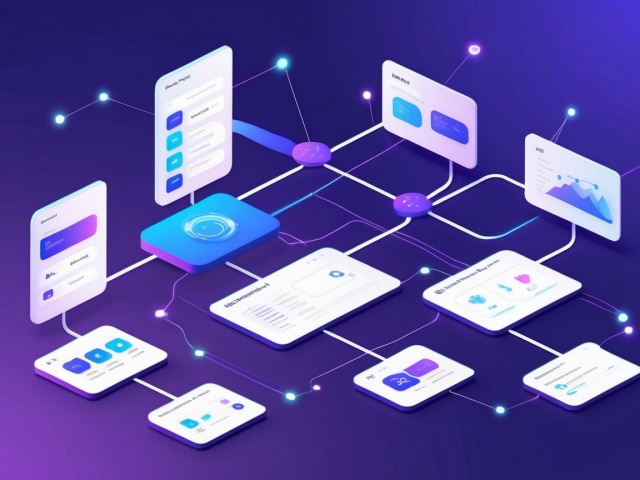An API (Application Programming Interface) is a set of rules and protocols that enables your PrestaShop store to communicate automatically with other software and applications. This programming interface transforms your e-commerce management by automating repetitive tasks. Moreover, it connects your site to an ecosystem of professional tools.
For an e-commerce business owner, understanding the role of an API represents a major competitive advantage. These invisible connections optimize your business processes. Consequently, they reduce human errors and free up time to focus on growing your business.
Simple technical definition of an API
Think of an API like a waiter in a restaurant who serves as a link between you and the kitchen. You place an order, the waiter transmits the information to the kitchen, then brings back your dish. An API works exactly this way between your PrestaShop store and other applications.

The API uses standardized protocols like REST to exchange data. These protocols ensure reliable and secure communication between different systems.
How an API serves your PrestaShop store
Automatic data synchronization
The API eliminates repetitive manual data entry that wastes time and generates errors. Your inventory updates automatically between your ERP and your site. Similarly, your prices sync with your suppliers. Your product sheets are enriched without human intervention.
This synchronization ensures data consistency across all your sales channels. Consequently, you avoid information gaps that harm customer experience.
Connection with external services
Your PrestaShop store becomes the center of a connected ecosystem thanks to its Application Programming Interface. You can integrate payment solutions, shipping carriers, marketing tools, or accounting systems. Each specialized service brings its added value while sharing necessary information with your store.
The PrestaShop API also facilitates connection with marketplaces like Amazon or eBay. Thus, you manage all your sales channels from a single interface.
Concrete benefits of an API for your business
Time savings and automation
Time-consuming tasks like inventory updates disappear from your daily routine. Order exports to your logistics become automatic. Price synchronization occurs without intervention. A well-configured Application Programming Interface can save you several hours per week.
You can reinvest this saved time in business development or improving your offering. Automation also reduces the risk of human errors that can be costly in customer satisfaction.
Enhanced customer experience
Your customers benefit from always accurate and up-to-date information thanks to the API. Delivery times reflect reality. Displayed inventory corresponds to actual availability. Order processes run smoothly.
This reliability builds customer trust. Consequently, it encourages repeat purchases and improves your conversion rate.
Practical examples of PrestaShop API usage
A clothing merchant uses their supplier’s API to automatically retrieve new collections. They update their product sheets with photos, descriptions, and prices without manual intervention. Meanwhile, their accounting software retrieves orders via the PrestaShop API to automatically generate invoices.
A multichannel seller synchronizes inventory between their PrestaShop store, Amazon, and eBay thanks to these platforms’ APIs. When a product sells on a marketplace, inventory updates instantly everywhere. Thus, they avoid frustrating overselling.
A specialized store connects their external loyalty system to PrestaShop via Application Programming Interface. They automatically award points during purchases. Additionally, they enable direct redemption on the site.
How to use PrestaShop API in your store
First, identify your priority needs and the services you want to connect. Verify that these services offer an API compatible with PrestaShop. Most professional solutions provide this capability.
Integration can be done through specialized PrestaShop modules. These modules are developed by service providers or third-party developers. They significantly simplify the installation and configuration process.
For specific needs, working with an experienced PrestaShop developer ensures custom integration. This approach guarantees perfect adaptation to your business processes. Moreover, it offers scalability for your future needs.
The native PrestaShop API offers numerous integration possibilities. It allows managing products, orders, customers, and many other features essential to your e-commerce business.